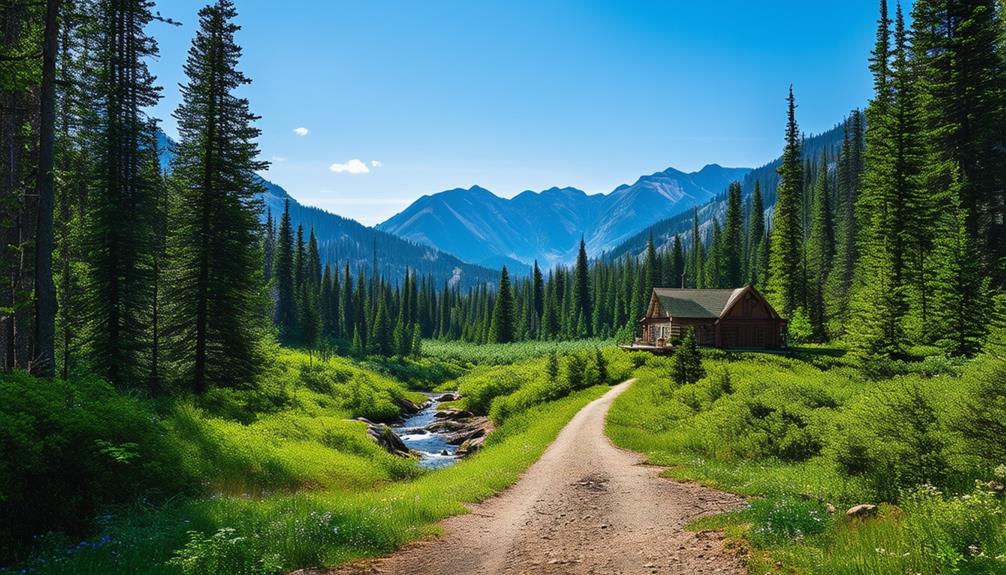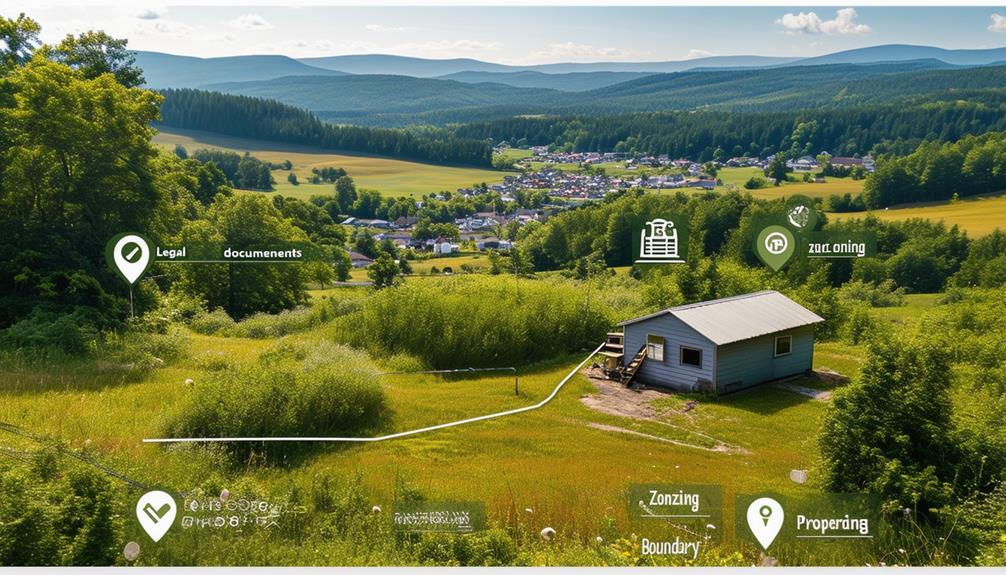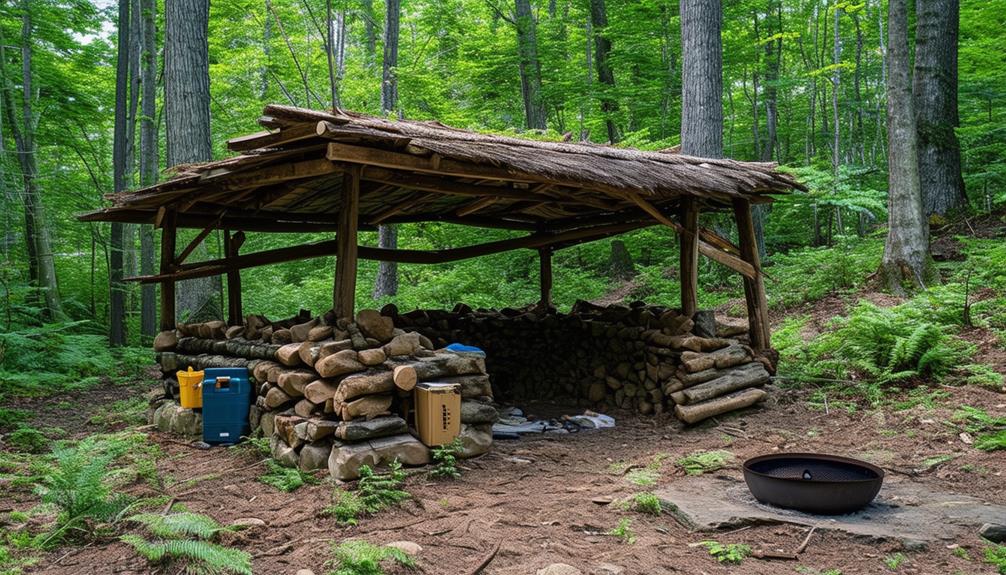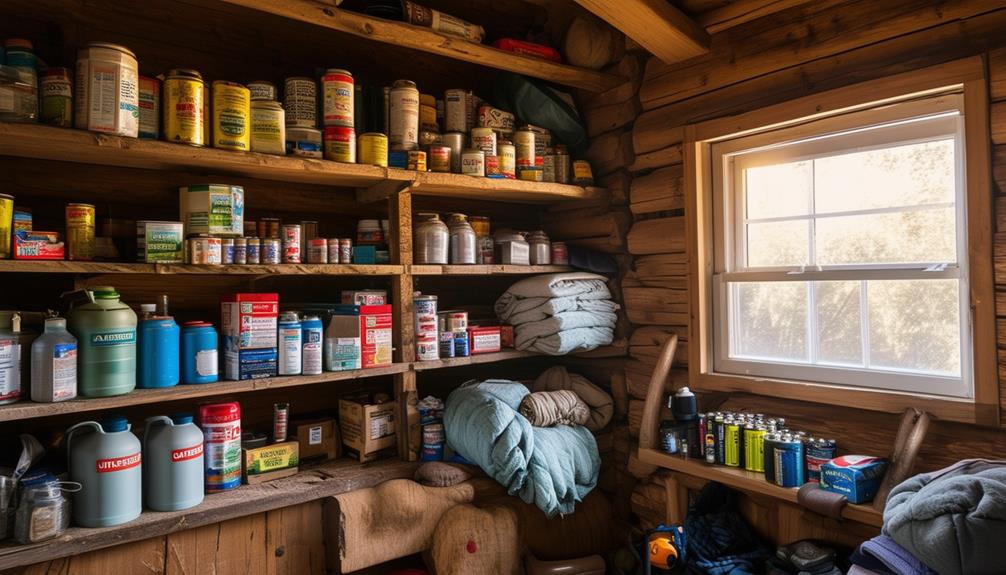Choosing the Perfect Bug Out Location

Selecting the ideal bug-out location involves several critical factors that can significantly impact your survival plan. Accessibility is key—can you reach the location within a tank of gas or a week's walk? A reliable water source is essential, and security and seclusion are equally important for your safety. Long-term sustainability and legal considerations also matter; you don't want zoning issues when you're trying to stay off the grid. How can you balance all these elements effectively? Let's explore each aspect in detail.
Location Accessibility

When choosing a bug-out location, ensure it's accessible within a single tank of gas or a week's journey on foot. This ensures you can quickly reach your safe haven during an emergency.
Aim for a distance of 50-70 miles from your primary residence, providing seclusion without being too far to travel swiftly.
Avoid densely populated areas to minimize risks and chaos. Accessibility should be a top priority, considering factors like terrain, road conditions, and potential obstacles.
You don't want to be stuck in traffic or face impassable roads when time is of the essence.
Evaluate the journey's simplicity, whether traveling by foot or vehicle. Ensure the route to your bug-out location is as direct and safe as possible.
Water Source Reliability
A reliable water source is crucial for your bug-out location, ensuring you have water for drinking, cooking, and hygiene. Natural water sources like streams, rivers, lakes, or springs can offer a sustainable and dependable supply. Prioritize locations with easy access to these sources to minimize the risk of water shortages, especially during dry seasons.
Evaluate the accessibility of the water source throughout the year. Consistent water access is necessary, so consider fluctuations in water levels and flow rates. Dry seasons can significantly impact your supply, making it essential to have a backup plan.
Implement rainwater collection systems as an emergency water source. These systems capture and store rainwater, providing an additional supply when natural sources run low. Ensure you have proper filtration and purification methods in place to make the water safe for consumption.
Security and Seclusion

While a reliable water source is essential, the security and seclusion of your bug-out location are equally crucial to guarantee safety. Opt for secure, concealed land away from easily reachable areas to ensure privacy and protection. Choosing locations with natural security features like dense forests, rugged terrain, or natural barriers can greatly reduce the risk of detection. These elements offer physical protection and add a layer of secrecy, making your site difficult to detect by passersby.
Accessibility is a key aspect to consider. Avoid noticeable or easily accessible sites that may attract unwanted attention during a crisis. Instead, select a bug-out location that's tucked away with challenging entry points. This seclusion ensures that potential threats are less likely to find or approach your haven.
Hidden land with minimal paths or roads leading to it is ideal for maintaining your privacy and security.
Long-Term Sustainability
Long-Term Sustainability
Evaluating the long-term sustainability of your bug-out location involves assessing its potential for self-reliant practices such as gardening, farming, and securing food and water sources.
Key Considerations for Sustainability:
| Aspect | Considerations |
|---|---|
| Water Sources | Reliable access to wells, streams, or rainwater collection systems to ensure a constant supply of freshwater. |
| Food Sources | Feasibility of gardening, farming, hunting, and fishing. Assess soil quality, local climate, and space for cultivation and livestock. |
| Energy Sources | Sustainable options such as solar panels, wind turbines, wood, and hydro-power to ensure self-reliance. |
Water Sources: Ensure your location has dependable freshwater access, whether from a well, stream, or rainwater collection system. This is crucial for reducing the need to frequently leave the location to replenish your supply.
Food Sources: Evaluate the land's ability to support crops and livestock. Inspect soil quality, climate conditions, and available space for gardening and farming. Additionally, assess local wildlife and fish populations to ensure they can provide supplementary food sources through hunting and fishing.
Energy Sources: Identify sustainable energy options like solar panels, wind turbines, wood for heating and cooking, and possibly hydro-power. These will help maintain self-reliance without depending on external resources.
Legal and Zoning Considerations

Understanding local zoning laws is crucial to ensure your bug-out location aligns with your survival plans. These regulations dictate property usage, affecting everything from water sourcing to shelter construction. Confirming your bug-out location (BOL) meets these requirements will prevent future legal complications.
Start by researching the zoning laws for your chosen area. Can you build a shelter or dig a well for water? Knowing this in advance helps you avoid compliance issues that could hinder your survival efforts. Non-compliance can result in hefty fines or the forced removal of your structures.
When planning property alterations, such as building a cabin or installing water systems, securing the necessary permits is vital. These permits ensure your development options are legal and safe. Adhering to zoning laws guarantees your BOL will be available when needed, reducing the risk of legal battles.
In short, aligning your bug-out location with the appropriate zoning laws ensures a smooth development process, allowing you to focus on survival rather than legal issues.
Conclusion
Ensure your bug-out location is accessible within a tank of gas or a week's walk.
Verify there's a reliable water source and that the area is secure and secluded.
Focus on long-term sustainability and be mindful of legal and zoning regulations.
By considering these factors, you'll be well-prepared for any emergency situation.
Stay safe and ready for anything!




